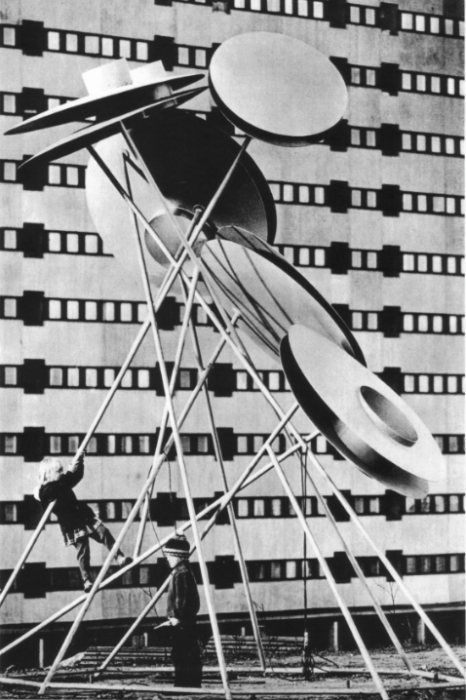Magdalena Wiecek

Currently I am undertaking, with my friend the archivist Aleksander Wawrzyniak, a 9 month long research project on the life, art, and pedagogical philosophy of Magdalena Więcek. Wiecek was an outstanding sculptor born in Katowice in 1924, co-creator of the modern trend in Polish sculpture. But Wiecek’s work has never been more relevant: ten years after her death, Polish artists today are still heavily influenced, often without knowing it, by Wiecek’s work. Linking her life and work to the capital milestones of the Polish artscene from the 50’s to the 70’s, we are developing the definitive catalogue — inaugurated with a lecture at Królikarnia, Warsaw’s Museum of Sculpture — of an artist who delivered her country into the European avant-garde and revolutionized Polish artistic pedagogy for good.
Więcek made her debut in the 1950s when, similarly to other young sculptors like Alina Szapocznikow or Alina Ślesińska, she developed a new style — figurative and expressive, full of emotion and lyricism. Set against the Stalinist period, this new sculpture marked a radical departure from the more representative sculpture in Soviet propaganda, although Magdalena remained scarred by socialist realism for much of her life, the treatment of the body in her work - emotional and expressive - was entirely new. She exhibited in the first half of the 1950s at Zachęta at the National Art Exhibitions, in 1955 she took part in the Young Art Exhibition at the Arsenal.
She started first her revolution with her first individual exhibition at Galeria Krzywe Koło in Warsaw (1958), when she moved away from realism, giving high value to the materials she worked with and to experimentation with them: she denuded completely the sculptural figures, which appeared more and more simplified, advocating the paradigm of industrialization. In 1965, she took part in the famous Biennale of Spatial Forms in Elbląg, the gold of modern sculptors, and there she created sculptures in the open air - metal constructions, light and completely abstract. This convention remained faithful until the end.
We are undertaking a broad and deep exploration of her vast archive — full of hundreds of local and international press reviews, pictures, personal letters, catalogs and even three folders with all the documentation that the IPN kept about her when she lived abroad. In doing so, our project sets out to find synergies between the new art critic scene that was growing in Poland —relevant figures such as Mieczyslaw Porebski— the leading galleries where she exhibited and with the art movements that were taking place in her capacious range of being and creation.
A significant part of the research combines elements from other artist’s archives, exploring different figures connected to Galeria Krzywe Koło.
Krzywe Koło was an independent initiative started and run by the artist Marian Bogusz. As a gallery, it showed works by cutting edge artists. As a klub, it concentrated intellectuals from all disciplines that focused in defining modernity. As a space opened to cross-disciplinary discussions that included art, sociology, history, literature and science, Krzywe Koło grounded an experimental form of a gallery program. Weaving this reality with her strongly outlined creative personality, we aim to define the elements that make Magdalena Wiecek’s work so way-out and timeless.
In undertaking this research, we create the definitive catalog of Wiecek’s work, based on our own classification of the artist’s archive. This catalog will be showed at a new website that we will design by December 2019. This website will provide a unique resource to the public: there will be complete documentation and images of the works, besides Wiecek full biography with information about her shows and statements through critic’s reviews and texts related to it. Another purpose of the page will be to announce the news regarding the work of Magdalena Wiecek. The most imminent of which will be a lecture by four panelist in Królikarnia, the Sculpture Museum in Warsaw, the city where she lived, worked and still exhibits.
Inés Muñozcano